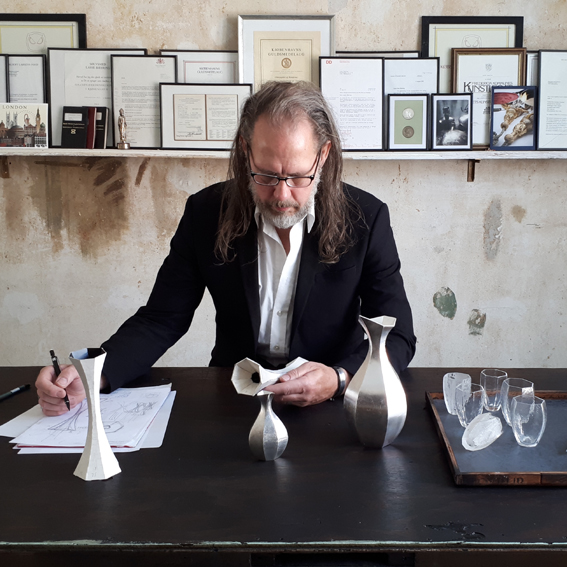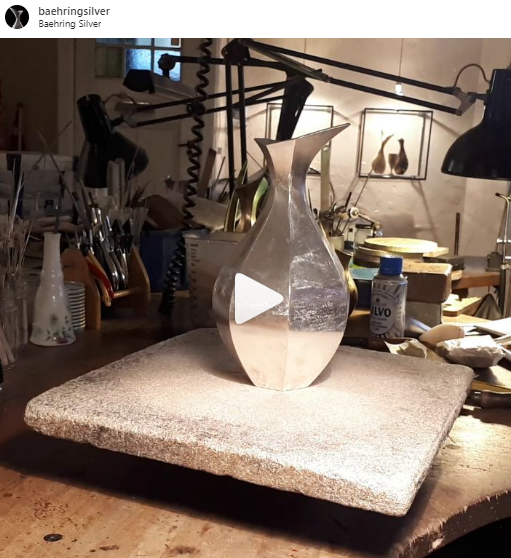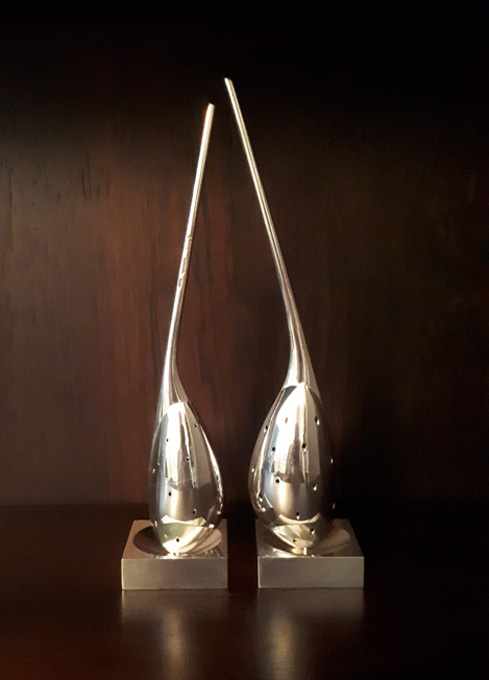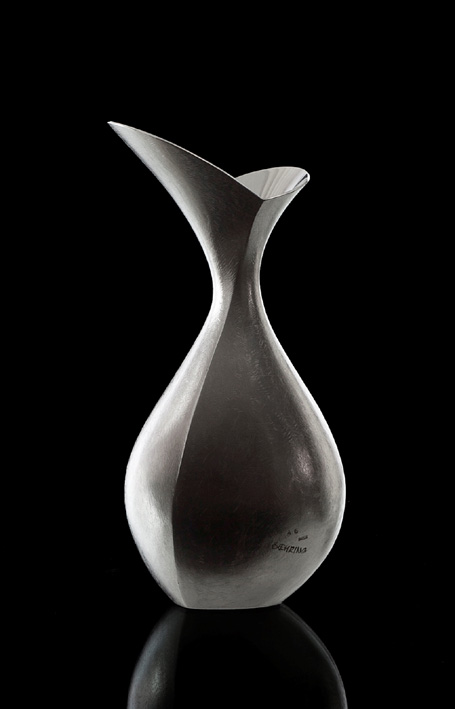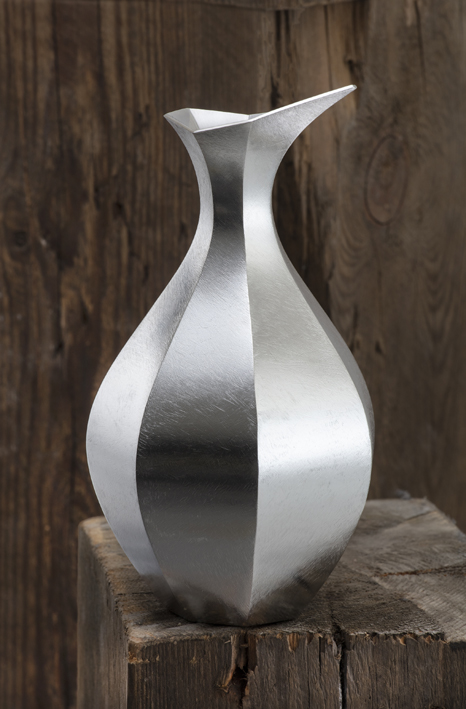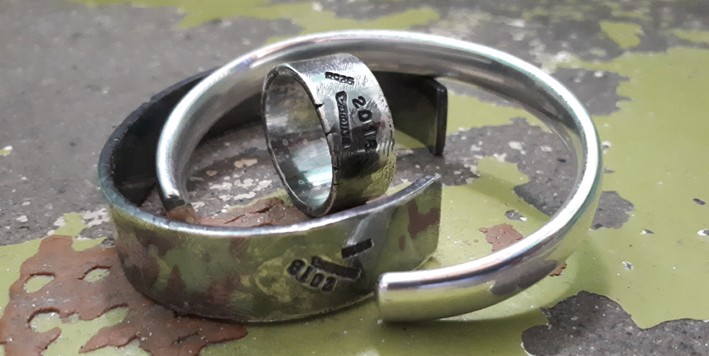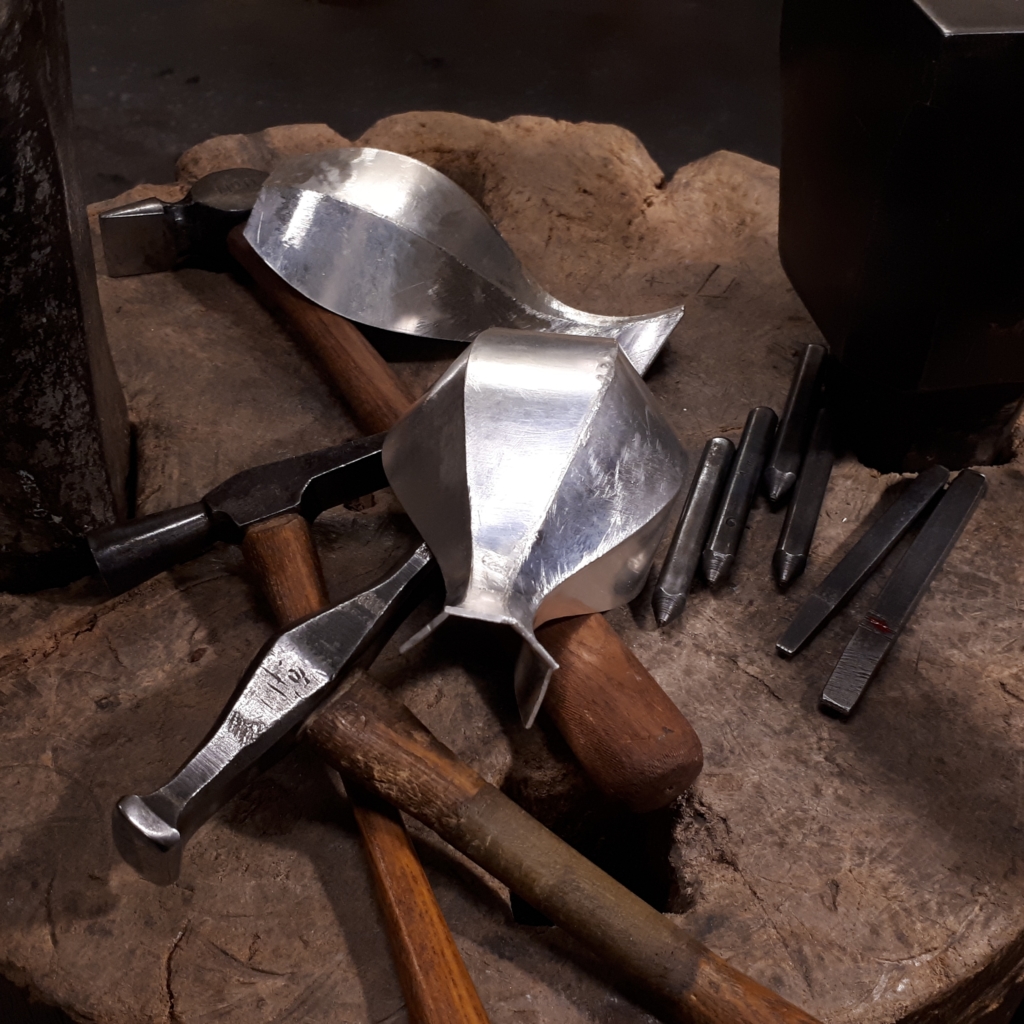The Pitcher – The realization of a vision – Baehring Silver 2021.
The creation of a sterling silver wine/water pitcher. An evocative flow from inspiration to finished piece.
Lasse Bæhring is a Danish Artist and Silversmith. Trained at The Georg Jensen Silversmithy in the renowned traditional craft of Silversmithing he executes his own innovative and award winning designs for the fastidious international market.
With more than 100 exhibitions over a 30 years international career Lasse Bæhring/Baehring Silver are at the top of his game. This video shows his process from start to finished piece.
Mail for inquiries and orders: baehringsilver@gmail.com and/or visit: http://www.baehring.dk/ http://baehringsilver.com/ https://www.instagram.com/baehringsilver/ https://www.instagram.com/baehringinsweden/ https://www.instagram.com/baehringcopenhagen/
#Tivoli #Pitcher #Bæhring #Baehring #Baehringsilver #Silversmith #Sterling #Silver #contemporarysilversmithing #DanishDesign #Danish #Classic #Design #Handmade #Handcrafted
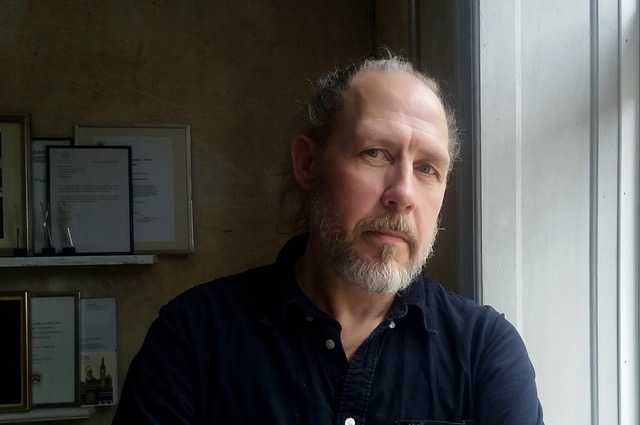
“I want to make silverware the way Tom Waits sings”
Translated by Poul Arnedal from his article in pov.international.
(https://pov.international/lasse-baehring-solvtoj-som-tom-waits/)
He is first and foremost an artist and then a silversmith. This has been both an advantage and a hindrance to the 57-year-old Lasse Bæhring, who over the past years has worked purposefully and eagerly to enter the UK market. But then the corona crisis came along and put a stop to his frequent work stays in London, where he after years of efforts was close to become a part of the local silversmithing community. On the other hand, it has given him the opportunity and time to work in Copenhagen on a number of his projects, which, despite both Covid-19 and Brexit, he is sure will bring him further into the international market for original silverwork in London, he says in a conversation with POV’s Poul Arnedal
“I don’t want to make telephone poles. In nature nothing is totally straight, “says the silversmith Lasse Bæhring, adding: “I want to make silverware in the way Tom Waits sings.”
“I cultivate the detail and the expertise in my craft as a silversmith. It must be both beautiful in the aesthetical sense and at the same time functional.”
And when he says, “want to make” and not just “make”, it’s because the 57-year-old silversmith’s work is a constant development of new forms and ideas that he struggles with right down to the smallest detail.
“The art – or in fact it is called ‘the divine’ – is in the detail. That is why I can make a completely unique new pitcher by changing the sides of the model by just a half or one millimetre,” he explains, referring to his ‘Tivoli’ silver pitcher, which is made up by seven different curved silver plates.
“I was the child who didn’t really understand the world and its weird rules, and that’s often still how I feel.”
It has its name after the Ferris wheel in The Tivoli Garden, but the gondolas have just been turned upside down. “And then it is also a good title abroad, where most people know what Tivoli is,” he adds.
“That’s what I cultivate: the detail and the expertise in my artistic work as a silversmith. It must be both beautiful in the aesthetical sense and at the same time functional. When making a pitcher, a bowl or a spoon, the balance is absolutely crucial,” he says showing it with one of his Frankenstein spoons balancing on the tip of his index finger. “It is something completely different than making jewellery. There is no point in making a pitcher that tumbles by the slightest touch however beautiful it is in terms of design.”
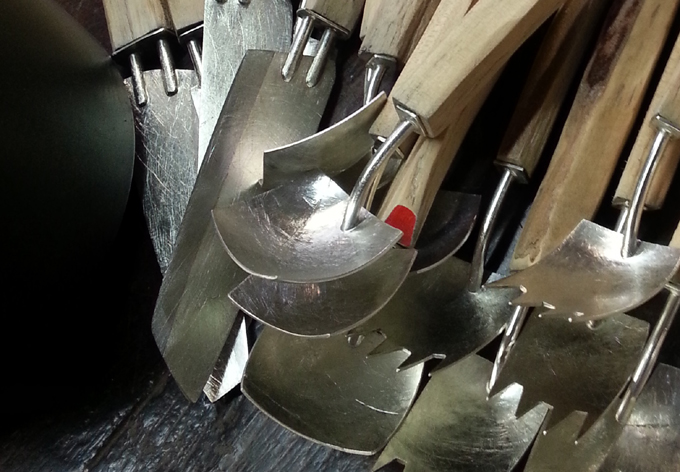
“When the others were playing or kissing I was drawing”
But as long as the balance is fine the art always comes first for Lasse Bæhring. As he says: “I was born an artist and trained as a silversmith.”
And although he wasn’t brought up in an artist’s home his personal creative talent has been present since his earliest childhood.
“When the other kids were playing, I was drawing. When they played football, I was drawing. When they kissed behind the hedge, I was drawing.
“I was lucky enough to sell one of my Tivoli pitchers just before the corona crisis started. It has kept me financially afloat, although it also meant that I could not partake in the relief packages.”
I was a kid living in a world of my own – even when I started kissing a little in the nooks. I was the child who didn’t really understand the world and its weird rules, and that’s still how I often feel.
“The fact that metal was the object of his artistic development is due to the influence of his father, who was a trained machine worker and for 12 years the powerful chairman of the trade union Metal and an influential person in the Danish Labour Party. His name was Max Bæhring.
“My father also had an artistic vein. He played the clarinet and could have become an excellent professional jazz musician. But it was not a dream he dared to live out. Having three children jazz was an overly uncertain existence.
My mother, on the other hand, was romanticizing the artistic way of living and saved all my drawings. But she was also politically active and sat for a period in the local City Council in the Copenhagen suburb of Farum where we lived,” says Lasse Bæhring.
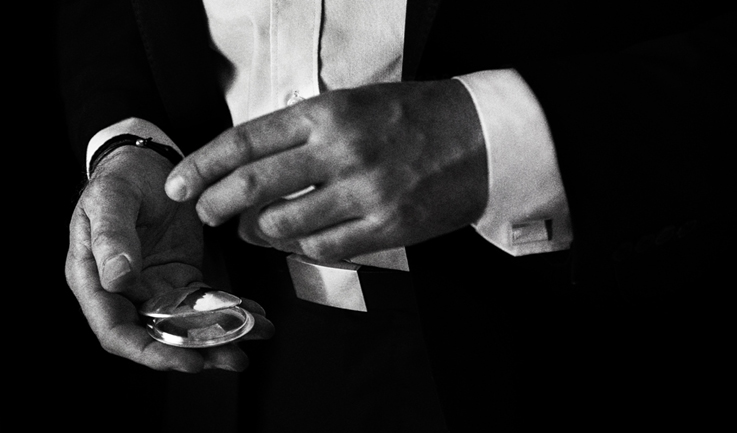
An influential goldsmiths company with roots in the Middle Ages
Over the years he has participated in well over a hundred exhibitions and in recent years exhibited in several European metropolitan cities. But like many other independent artisans, the corona crisis has also affected Lasse Bæhring and prevented him from getting on with new projects. But instead of despairing, he has spent the last few months of lockdown finishing and working on a number of on-going projects at his workshop and at his apartment in the Copenhagen neighbourhood of Østerbro.
“In the UK and especially in London, silversmiths have a completely different status than in Denmark, and the prices you are paid for original silverwork are completely different.”
“I was lucky enough to sell one of my Tivoli pitchers in England just before the corona crisis started. It has kept me financially afloat, even if it also meant that I could not partake in the relief packages,” he notes.
The buyer was no other than a former Prime Warden of the influential Worshipful Company of Goldsmiths [https://www.thegoldsmiths.co.uk] which has existed since the14th century and whose hallmark must approve all silver work in England.
Success in London
In recent years Lasse Bæhring, who for 16 years and until recently was the chairman of the exhibition group Danish Silversmiths, has spent much of his time in London, where he among other things has taught at The Royal College of Art, had one of his pieces incorporated into the permanent collection at The Victoria & Albert Museum, and worked in the workshop of one of England’s foremost silversmiths, Richard Fox, who is today the Prime Warden of the Worshipful Company of Goldsmiths.
“It is not a straightforward world to get into and be accepted by, not least for a Danish Viking like me, who doesn’t really understand the world’”
“In the UK and especially in London silversmiths have a completely different status than in Denmark. And the prices you are paid for original silverwork are completely different. That is one major reason why I have spent so much time over there. It is not a straight forward world to get into and be accepted by, not least for a Danish Viking like me, that doesn’t really ‘understand the world’. They have an incredible hierarchy and so many unwritten rules and interpersonal codes where you can very easily be misunderstood – or you yourself misunderstand something. Here it’s sometimes the devil, and not the divine that hides in the detail.
On the other hand there is a community for original silverwork that is second to none. In addition to this it has also been a great advantage for me to be able to say that I am trained at and have worked with the Georg Jensen Silversmithy, which is highly recognised and appreciated over there,” says the Danish silversmith, who, just as the corona crisis took its start was about to get well into the life of the British silversmith world.
“Now the corona crisis has meant that I haven’t been over there for more than three months, and it’s a long time in a context where being present means a lot. On top of that, no one knows what influence the entire Brexit affair will have on an EU citizen like me. But I can’t do anything about it, and I’m convinced that I’ll find a solution that means I can resume my work and my contacts over there. “
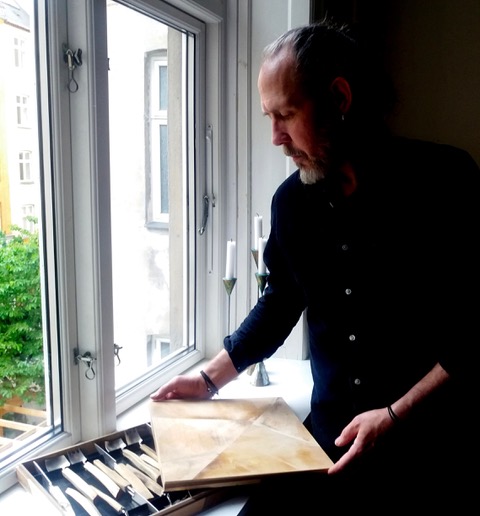
After a year at art school, it was time to get a ‘real’ job
It is the same indomitable attitude that has characterized him most of his life as a silversmith – and one could also say as a human being. But in this case one cannot separate the man and the silversmith. The person Lasse Bæhring is the silversmith and the artist.
When he left school after 10th grade he got a temporary job in a kindergarten, but much more important he was sent to an art school in the neighbouring suburb of Birkerød to be taught by the painter Hans Chr. Høier, who is represented at the Danish National Gallery and the National Gallery in Oslo.
“If it fits into the aesthetic, scratches and notches are a welcome part of some of my works. Just as you experience it in nature.”
This lasted a year after which his father thought it was time for his son to be educated for a ‘real’ job. Hence Lasse now being 18 years old started as an apprentice at the famous Georg Jensen Silversmithy where he continued as a silversmith after completing his apprenticeship. But after eight years in a row with Georg Jensen he wanted to grow in his trade and entered the Goldsmiths College, which today is called the Institute of Precious Metal. Here he was studying for two years, and afterwards he found that his seat had been kept for him at Georg Jensen, where he continued as a journeyman for another two years until the trivial work of simply imitating the works of others became too much, and he threw himself into the existence of the independent silversmith.
And this is where Tom Waits enters the picture. For although he has made many beautiful works in polished silver, Lasse Bæhring also cultivates the more rough look, which among other things comes to light in his Tivoli pitchers, in his Frankenstein cutlery, and in a number of his accessories.
“If it fits into the aesthetic scratches and notches are a welcome part of some of my works. Just as you experience it in nature,” he says pointing to the rough surface of one of his Tivoli pitchers, which among other things has become part of his efforts to utilize as much of the silver as possible when he cuts the curved sides out of his silver plates.
“It is not just a random item from any H&M shop, but runs easily into a selling price of thousands of pounds.”
For silver, which costs more than ½ £ per gram, is a very expensive commodity even for a silversmith when he creates items that weighs between 500 and 700 grams and there are a lot of leftover bits. And as he is spending hundreds of hours developing his corpus (yes, it is called a ‘corpus’ in silversmiths language) it is evident that it is not just a random item from any H&M shop, but easily runs into a selling price of thousands of pounds.
Rough jewellery collection and Frankenstein cutlery
A few other collections that are the result of his efforts to utilize as much silver as possible are his jewellery collection, which among other things consists of rough silver bracelets for men. And it’s not least his Frankenstein cutlery made out of small remains from the carved silver plates to form parts of the forks, knives and spoons, which he has mounted on a raw cut wooden shaft. The result is an aesthetic design that is worthy a state-of-the-art Michelin restaurant.
“I could have bought a brand new veneer, but it would have been quite boring to look at. Then rather recycle the old cabinets and make a style out of it”
One of the projects he has been working on during the corona crisis is a box in which to present his 36 piece cutlery set in a way it matches its content.
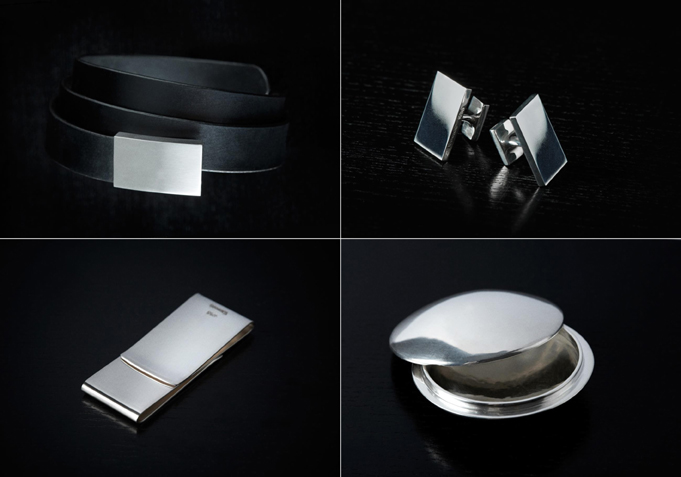
For if there is one thing he has learned during his many stays among English silversmiths, it is that presentation plays a crucial role in marketing a product -especially if it is a little out of the ordinary. That is why he has used the back of the old plywood doors, which are leftovers from his original but torn down kitchen, to piece together a patchwork of a plywood box to put the cutlery into. And with Lasse Bæhring’s work of precision and sense of the natural and aesthetic it appears as if it is in fact the cutlery that is made to fill in the flat box.
“I could have bought a whole new veneer, but it would have been quite boring to look at. Then rather use the old cabinets and make a style out of it,” he says.
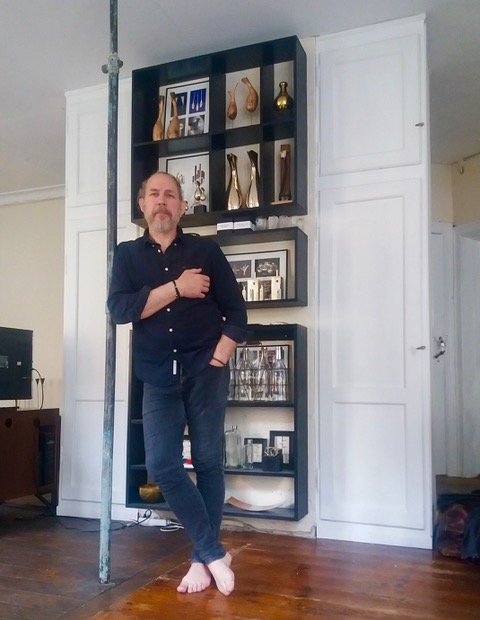
An artist’s home with gas pipes as a stripper pole
And speaking about his formerly and now abandoned kitchen we are in fact talking about two kitchens. Originally Lasse Bæhring was renting a two-roomed apartment, but when the neighbouring apartment became vacant, he was allowed to take it over as well. Today, the two apartments are merged into a spacious and rustic artist’s home. And the pipe that carries the city gas up to the upper floors and was originally tucked into the wall between the two kitchens now stands as a free-standing stripper pole in the middle of the apartment and adds to its very distinctive character that for many a refined semi-bourgeois resident in the rather posh neighbourhood could trigger an anxiety attack. But in the case of Lasse Bæhring, it has become an aesthetic element, which almost seems to have been deliberately placed there and fits perfectly into the rest of the interior.
“I love my apartment as well as Copenhagen so much that I wouldn’t think of moving permanently to London although that might be a good idea. But it could be very handy to get a permanent address somewhere in London or the surrounding area, so my presence over there would be more professional and strengthen my association to the British silversmithing community. Now we must wait and see what this Brexit-thing brings on, but I am quite convinced that my association with my British colleges will continue and deepen in the future,” concludes the Danish silversmith optimistically.

